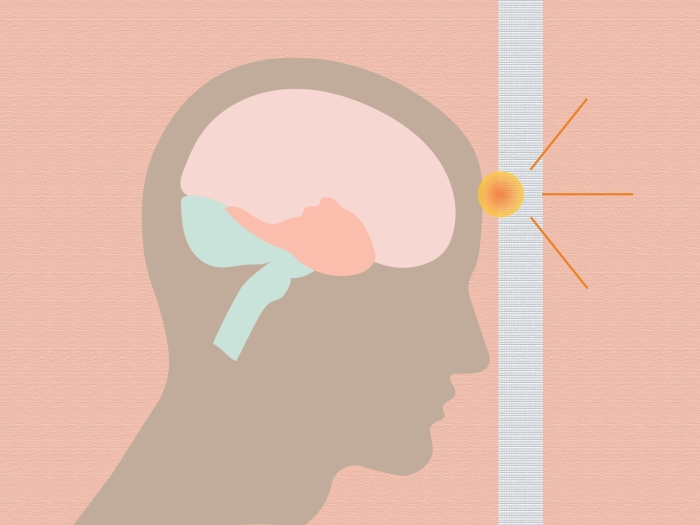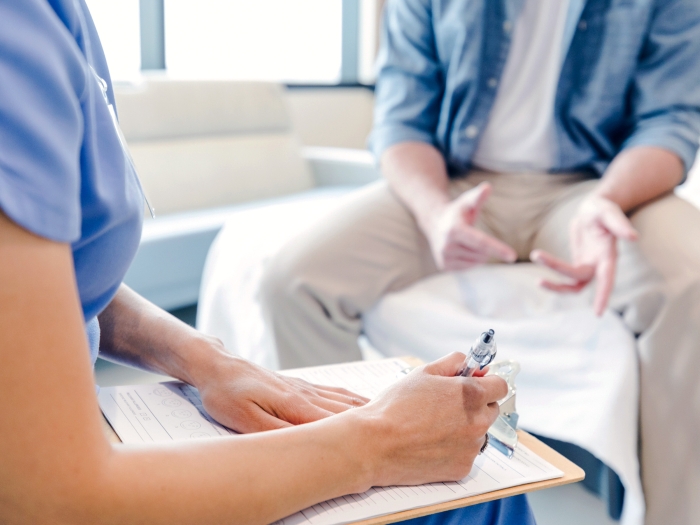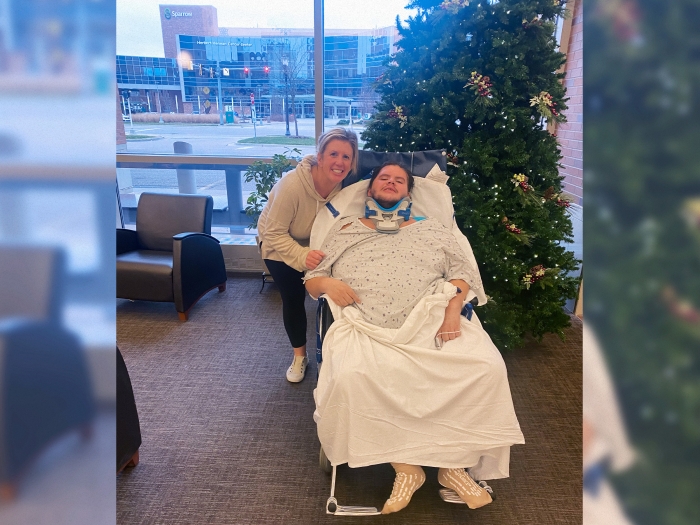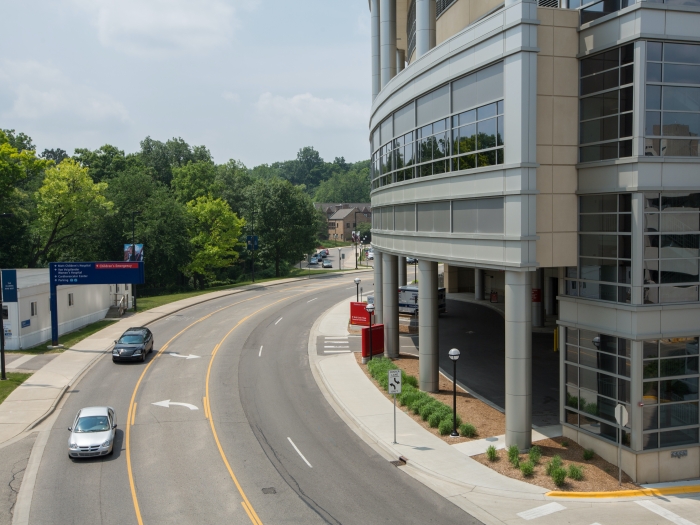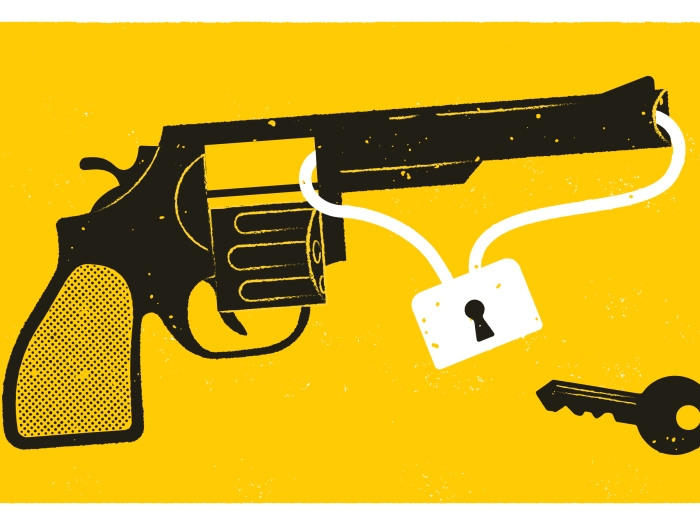Galvanized by a unique funding opportunity, a cross-disciplinary team of an engineer and emergency medicine physicians combined forces to combat traumatic brain injury.
1:00 PM
Author |

The reality of research is that many great ideas never move past a casual chat with a colleague or notes scribbled down in the middle of the night. Research is costly and risky, and just having an idea is never enough.
MORE FROM THE LAB: Subscribe to our weekly newsletter
But those risky ideas can lead to transformational new technologies and treatments that could save lives. They can make real progress in areas such as traumatic brain injury, where advancement and innovation are needed.
Each year, the Massey TBI Grand Challenge aims to provide an ecosystem where such ideas can reach their fullest potential. Hosted by the Michigan Center for Integrative Research in Critical Care, the competition fosters interdisciplinary, milestone-driven research across devices, therapeutics, microfluidics, diagnostics and health IT solutions.
The Grand Challenge is inspired by Massey family experiences, after a car accident injured mother and wife Joyce Massey. TBI's effects seriously impaired her daily function, including difficulty with speaking, eating and breathing. The Massey family gave their gift to U-M in early 2015 in hopes of sparing other families their experiences. It includes funding for clinical research, technology innovation, translational research, a patient-family support fund and the annual TBI Grand Challenge.
The intensive Grand Challenge process includes TBI education sessions, two rounds of proposal submissions and project reviews by TBI experts from across the university, as well as industry leaders and the Department of Defense. Once funded, the teams work closely with commercialization coaches to set milestones toward getting research from bench to the bedside.
Last year, Grant Kruger, Ph.D., from the Department of Mechanical Engineering, partnered with Michigan Medicine emergency medicine physicians Cindy Hsu, M.D., Ph.D., and Ross Kessler, M.D., to create an ultrasound system capable of detecting secondary brain injury. Their story, which they explain more about below, is a great example of how engineering and medicine can come together to solve a difficult problem.
Can you tell us about your Grand Challenge project?
Hsu: Our common goal was improving traumatic brain injury care. We're constantly looking at how we can treat patients more effectively. From the clinical perspective, we wanted to better detect compromise to cerebral blood flow (CBF). When CBF is compromised, it can lead to secondary brain injury.
SEE ALSO: Focusing on 'Golden Hours' of Care to Improve TBI Outcomes
First, we brainstormed on how to noninvasively measure CBF using vessels in the neck. All the vessels in the neck are closely related to one another, but we needed to measure the internal carotid artery (ICA). The ICA is challenging because it goes to the back of your head and can be hidden by your jaw, and there are gender- and age-related variants to the position across patients.
This is where Grant's expertise in designing wearable sensors and algorithms has been extremely helpful. He's been able to design a sensor that can actually locate the ICA noninvasively.
Now that we actually have the prototype finished, we're at a critical point in the project. After running some initial tests on a phantom flow system, we'll be working towards validating the data using healthy subjects.
Dr. Kruger, as an engineer, how did you start working on TBI research?
Kruger: Prior to coming to Michigan, I was actually more involved with the manufacturing industry. It wasn't until 2007 that I pivoted into health care and working with doctors to find new ways to collect patient data.
I've always had this dream of changing the world, so that's one of the things that drew me to health care. You have to collaborate with physicians who work with patients on a daily basis. While my research interest was never TBI specifically, this program provided a way for me to use technology I had already been working on in a new way that can have a real, positive impact and change the story of families like the Masseys.
This program provided a way for me to use technology I had already been working on in a new way that can have a real, positive impact and change the story of families like the Masseys.Grant Kruger, Ph.D.
How did you form your interdisciplinary team, and how has it helped the research?
Hsu: Ross and Grant had been working on a different ultrasound sensor project through the Coulter Program that was geared toward fluid management in sepsis patients. Ross, who is the co-director of clinical ultrasound, saw the potential for a similar sensor to be applied in TBI research. When I met with Grant and Ross, we agreed there was a definite synergy between the two projects.
Kruger: Ross and Cindy have been a fantastic resource for generating ideas, helping to collect data and influencing the overall design of our product. It's been a great collaboration. So far, the process has been technically intensive, but it's going to be more rewarding and interesting when we start collecting data from patients using the sensor. I think that's where heavy innovation on the front end pays off. … We've designed a prototype, but showing that it can actually do what we intended, and validating that data, is where the value is.
Hsu: Things that might seem intuitive to clinicians might not be intuitive for engineers, and vice versa. We speak different languages. For example, when we were designing the sensor, we had to decide on what shape made the most sense. It needed to be extremely portable so that it could fit on a patient's neck and also semi-sticky so it would stay in place.
SEE ALSO: Leveraging Low-Hanging Analytics to Make Patient Data More Powerful
Then we had to consider that most TBI patients would be wearing a C-spine collar for stabilization, so the sensor had to fit underneath that collar. We also realized we'd have to deal with the patient sweating as a result of the collar, so that became a factor in deciding what adhesive we would use. When deciding on all of these design elements, we had to factor in the everyday challenges of physicians. It's been very helpful to break the problem down to make sure both sides understand what we're trying to solve.
What advice would you offer to other engineers looking to get involved with TBI research?
Kruger: Everyone I've worked with at Michigan wants to change the world and save lives, so it doesn't take much convincing from that perspective. But the unique thing about the Massey Grand Challenge, and TBI specifically, is that there aren't many treatment options available to physicians right now. It's an easy place to make a really strong contribution — small innovations can have a wide-ranging impact.
Almost anything you work on can have a direct impact on saving lives, improving quality of life and preventing families from having to go through the most severe consequences of TBI. It's an area that has a lot of room for improvement and has such a wide scope. Regardless of what kind of engineer you are, you can have an impact on TBI. And these are things that are needed immediately. Doctors are desperate for good solutions.
Do you have an idea that could improve TBI care? Attend the 2018 Massey TBI Grand Challenge on March 2 to hear from engineers, clinicians, patients and more to find out how you can make a difference. Visit MasseyGrandChallenge.com to register.

Explore a variety of health care news & stories by visiting the Health Lab home page for more articles.

Department of Communication at Michigan Medicine
Want top health & research news weekly? Sign up for Health Lab’s newsletters today!
